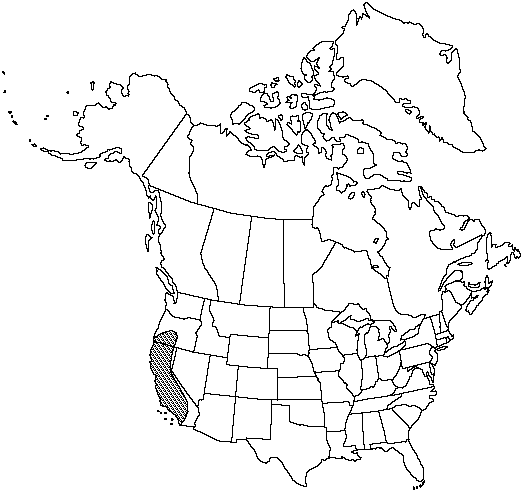Pellaea andromedifolia
5: 129. 1852.
Stems creeping, horizontal, slender, 2–4 mm diam.; scales mostly bicolored, narrowly lanceolate, largest scales 0.3–0.8 mm wide, centers black, thick, margins brown, thin, irregularly dentate. Leaves monomorphic, scattered along stem, 10–60 cm; croziers not conspicuously pubescent, densely scaly. Petiole straw-colored, tan, or gray, not lustrous, rounded or slightly flattened adaxially, without prominent articulation lines. Blade elongate-deltate, usually 3-pinnate proximally, 3–20 cm wide; rachis tan throughout, straight to slightly flexuous, rounded or flattened adaxially, glabrous or pubescent. Pinnae ascending or perpendicular to rachis, not decurrent on rachis, with 8–50 ultimate segments; costae usually straight, 15–140 mm, longer than ultimate segments. Ultimate segments elliptic to ovate, 3–15 mm, somewhat herbaceous, glabrous to sparsely pubescent abaxially; margins recurved on fertile segments, usually covering less than 1/2 abaxial surface, borders whitish, entire; apex retuse to rounded. Veins of ultimate segments evident. Sporangia short-stalked, containing 64 or 32 spores, not intermixed with farina-producing glands. 2n = 58; n = 2n = 87, 116, apogamous.
Phenology: Sporulating late spring–summer.
Habitat: Rocky slopes and ledges, usually on igneous substrates
Elevation: 0–1500 m
Distribution

Calif., Oreg., Mexico in Baja California
Discussion
Pellaea andromedifolia comprises three cytotypes: a sexually reproducing diploid, an apogamous triploid, and an apogamous tetraploid. Isozyme studies by G. J. Gastony and L. D. Gottlieb (1985) suggested that the apogamous triploid is an autopolyploid derived from sexual diploid populations. The apogamous tetraploid apparently resulted from hybridization between diploid and triploid individuals. These cytotypes have not been formally recognized as subspecies because their ranges seem to overlap extensively and because the ploidy level of the type collection of P. andromedifolia is not known.
Selected References
None.
Lower Taxa
"thick" is not a number.